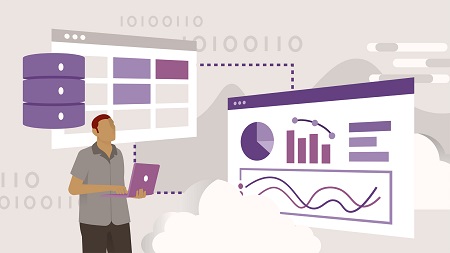
English | MP4 | AVC 1280×720 | AAC 48KHz 2ch | 4h 34m | 680 MB
Amazon Web Services (AWS) QuickSight is a powerful data analytics and visualization tool for monitoring data, analyzing trends, and making decisions. You can leverage ETL processes to get data, shape it into a viable form for calculations and analysis, then load the data into the visualization interface. From there, you can create visuals and charts to share the data trends and analysis to communicate it to a wider audience and key stakeholders. Join instructor Helen Wall in this course, as she shows how to use all the features of QuickSight. Learn how to connect to data sources, including Excel files, S3 buckets, and SQL Server; transform data and add calculations; load data into the QuickSight visualization interface; and create and format engaging visualizations and dashboards. Helen also explains how to share your work through dashboards that others can access on their computers or mobile devices, and share work outside the platform via email, exports, and embedded applications.
Topics include:
- QuickSight overview
- Connecting to AWS data sets and other data sources
- Transforming data
- Creating calculated and conditional fields
- Loading data to dashboards
- Creating and formatting visualizations
- Configuring dashboards
- Sharing your reports
Table of Contents
Introduction
1 Understand your data with QuickSight
2 What you should know
Getting Started with AWS QuickSight
3 Introducing Amazon Web Services (AWS) and QuickSight
4 Comparing cloud vs. desktop applications
5 Introducing visual components
Extracting Data
6 Overviewing supported data sources
7 Leveraging super-fast parallel in-memory calculation engine (SPICE)
8 Connecting to files
9 Connecting to AWS cloud services
10 Connecting to corporate data sources
11 Connecting to SaaS
12 Understanding data source limitations and settings
13 Challenge Connecting to data
14 Solution Connecting to data
Transforming Data
15 Renaming fields
16 Removing fields
17 Filtering rows
18 Changing data types
19 Creating calculated fields
20 Adding conditional fields
21 Setting up geospatial grouping
22 Challenge Transforming data
23 Solution Transforming data
Loading Data
24 Creating data sets
25 Sharing data sets
26 Refreshing data
27 Joining tables
28 Deleting data sets
Creating Visualizations
29 Creating visuals
30 Exploring visualization options
31 Aggregating measures
32 Formatting visuals
33 Sorting data logically
34 Filtering visuals
35 Adding color themes
36 Leveraging conditional formatting
37 Creating table calculations
38 Challenge Creating visualizations
39 Solution Creating visualizations
Configuring Dashboards
40 Introducing visualization best practices
41 Interacting between visualizations
42 Drilling down into visuals
43 Utilizing parameters
44 Adding on-screen controls
45 Creating stories
46 Leveraging ML Insights
47 Challenge Configuring dashboards
48 Solution Configuring dashboards
Sharing Your Analysis
49 Navigating dashboard of visualizations
50 Emailing reports
51 Viewing on a mobile device
52 Exporting reports and data
53 Setting up anomaly alerts
54 Embedding dashboards
Conclusion
55 Next steps for understanding your data
Resolve the captcha to access the links!